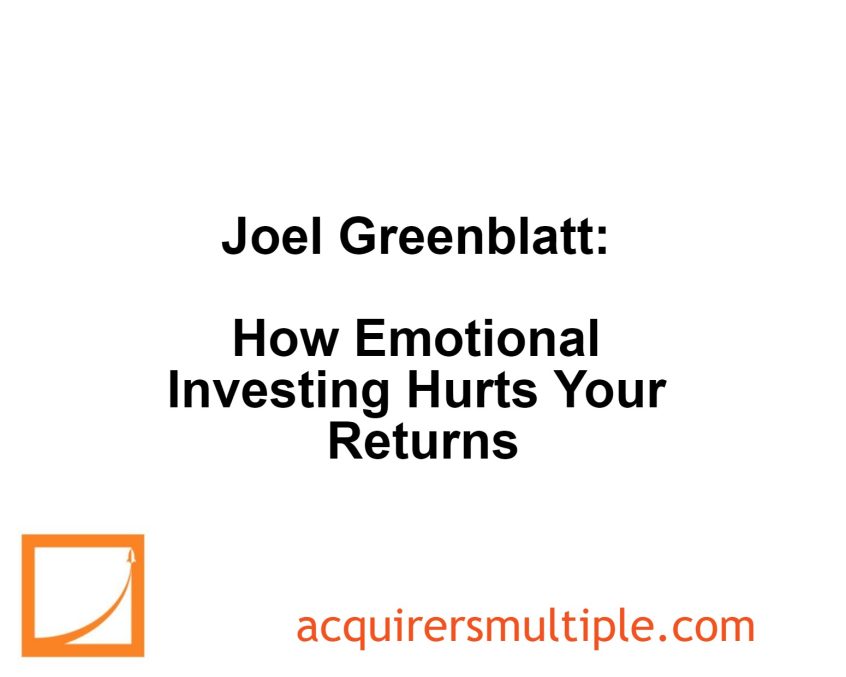In his book –
Here’s an excerpt from the book:
What was the result? In short, an unintended experiment across thousands of investment accounts. As it turned out, the self-managed accounts, where clients could choose their own stocks from the preapproved list and then follow (or not) our guidelines for trading the stocks at fixed intervals didn’t do too badly.
A compilation of all self-managed accounts for the two-year period after we started showed a cumulative return of 59.4 percent after all expenses. Not too bad—except that the S&P 500 during the same period was up 62.7 percent.
But a compilation of the “professionally managed” accounts that just automatically followed the rules earned 84.1 percent after all expenses over the same two years, beating the “self-managed” by almost 25 percent (and the S&P by well over 20 percent).
For just a two-year period, that’s a huge difference. It’s especially huge since both “self-managed” and “professionally managed” accounts chose investments from the same list of stocks and supposedly followed the same basic game plan.
One conclusion could be that on average the people who self-managed their accounts took a good plan and used their judgment to unintentionally eliminate all the outperformance and then some. Looking more closely through the accounts, here’s what appeared to happen:
1. Self-managed investors avoided buying many of the biggest winners—most likely because the biggest winners are usually the most out-of-favor companies that are psychologically difficult to buy. Many self-managed investors eliminated companies from the list that they just knew from reading the newspaper faced a near-term problem or uncertainty. But many of these companies turned out to be the biggest future winners.
2. Many self-managed investors stopped following the book’s game plan after the strategy underperformed or the market fell for a period of time. Why? Probably because it’s hard to stick with a strategy that’s not working for a little while or to hang in there when the market drops. Yet, these same investors put more money into the strategy only after it outperformed or the market went up.
Look no further than the best-performing U.S. stock mutual fund for the decade of the 2000s to confirm this wasn’t a fluke. This best-performing fund actually earned over 18 percent per year over the decade while the popular market averages were essentially flat.
However, because investors bailed out during the periods after the fund had underperformed or the market went down and put in more money only after the fund had outperformed or the market went up, the average investor (weighted by dollars invested) actually turned the fund’s 18 percent annual gain into an average annual loss of 11 percent during the same ten-year period.
You can find a copy of the book here:
For all the latest news and podcasts, join our free newsletter here.
Don’t forget to check out our FREE Large Cap 1000 – Stock Screener, here at The Acquirer’s Multiple:




